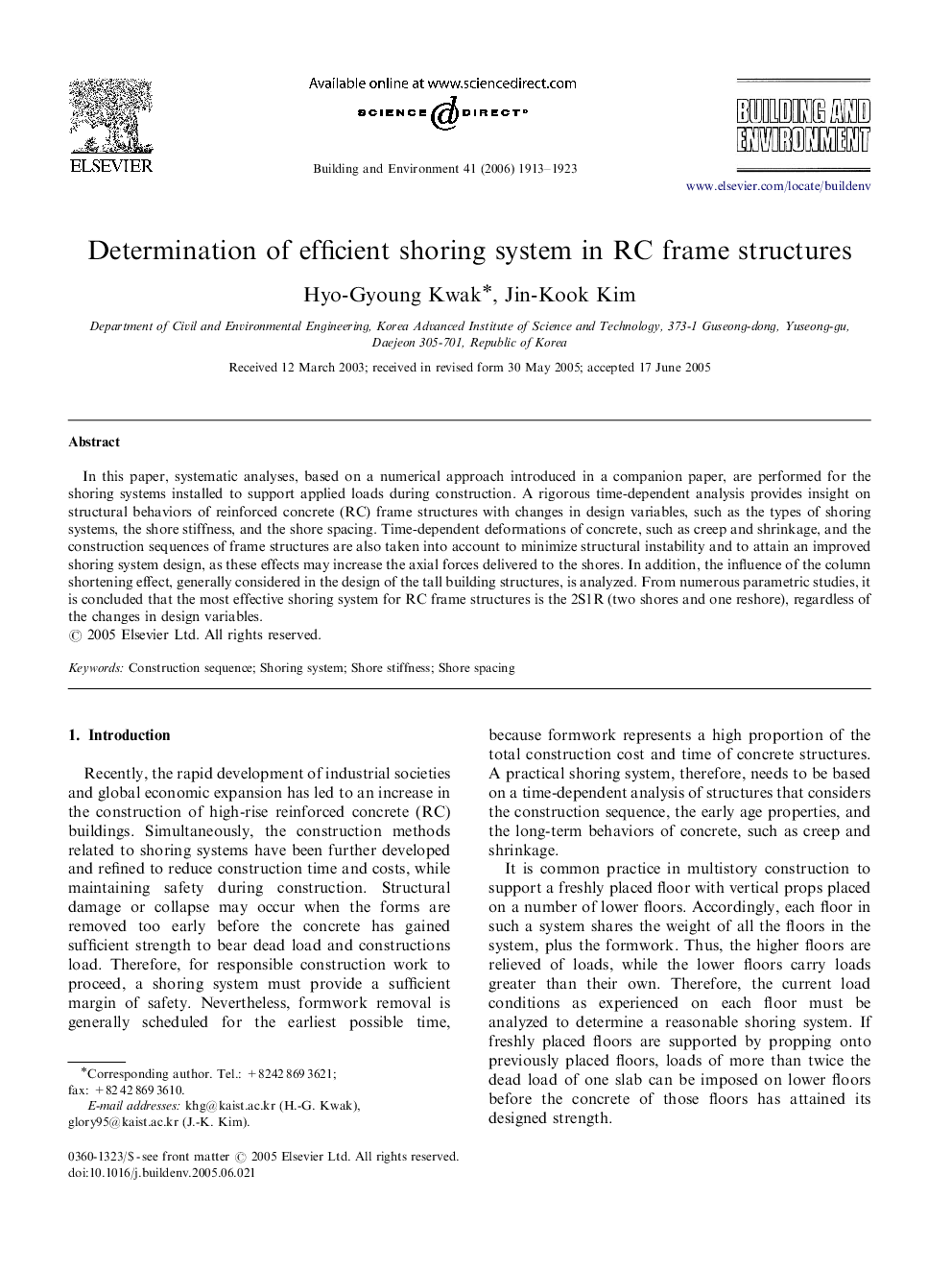| Article ID | Journal | Published Year | Pages | File Type |
|---|---|---|---|---|
| 250366 | Building and Environment | 2006 | 11 Pages |
In this paper, systematic analyses, based on a numerical approach introduced in a companion paper, are performed for the shoring systems installed to support applied loads during construction. A rigorous time-dependent analysis provides insight on structural behaviors of reinforced concrete (RC) frame structures with changes in design variables, such as the types of shoring systems, the shore stiffness, and the shore spacing. Time-dependent deformations of concrete, such as creep and shrinkage, and the construction sequences of frame structures are also taken into account to minimize structural instability and to attain an improved shoring system design, as these effects may increase the axial forces delivered to the shores. In addition, the influence of the column shortening effect, generally considered in the design of the tall building structures, is analyzed. From numerous parametric studies, it is concluded that the most effective shoring system for RC frame structures is the 2S1R (two shores and one reshore), regardless of the changes in design variables.
